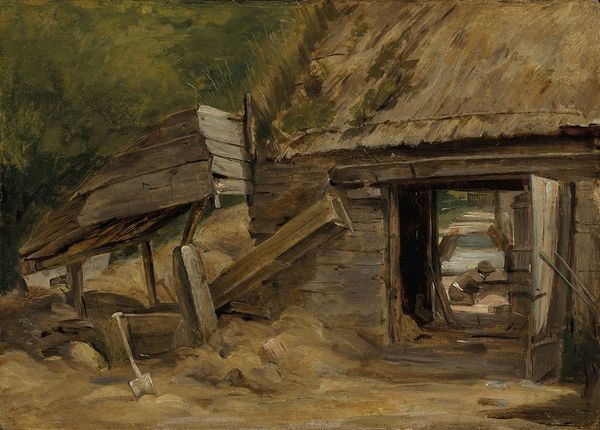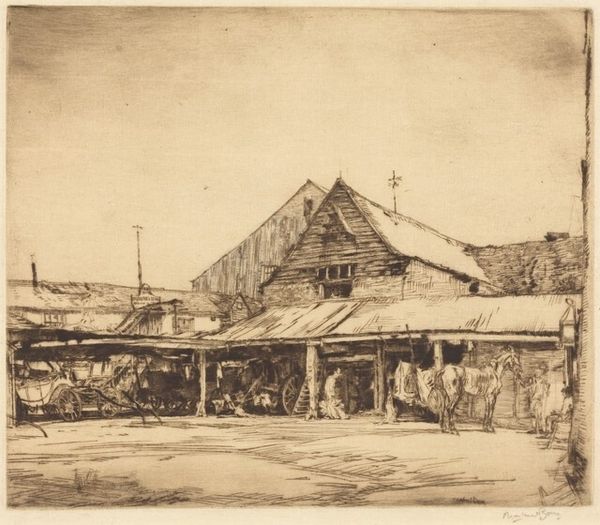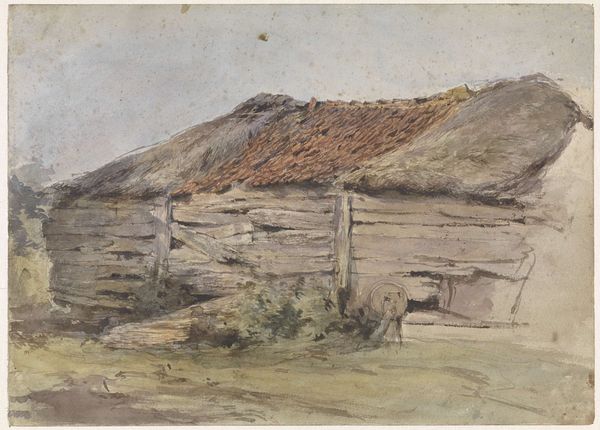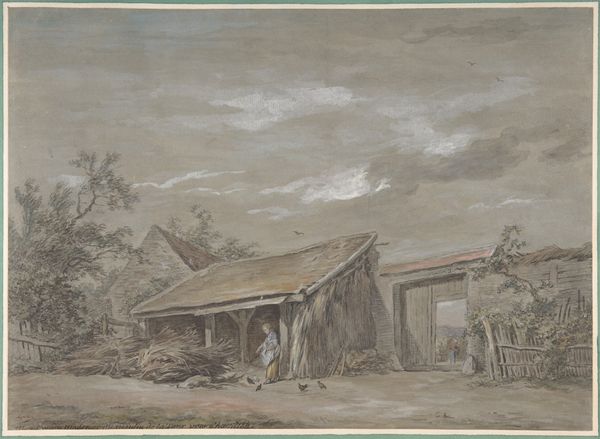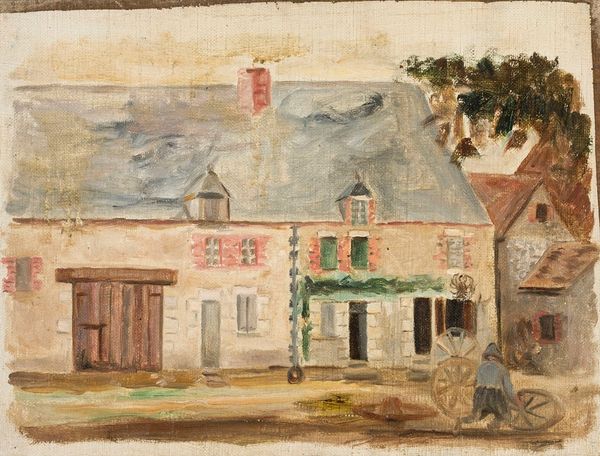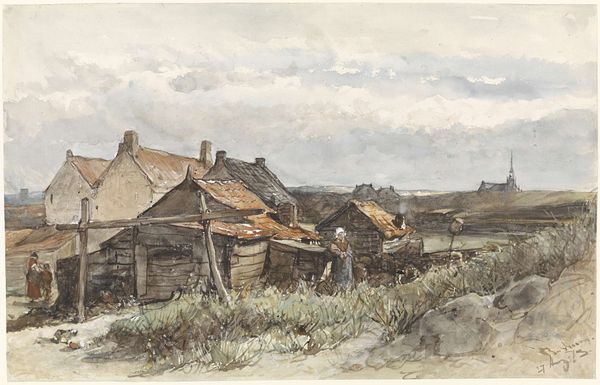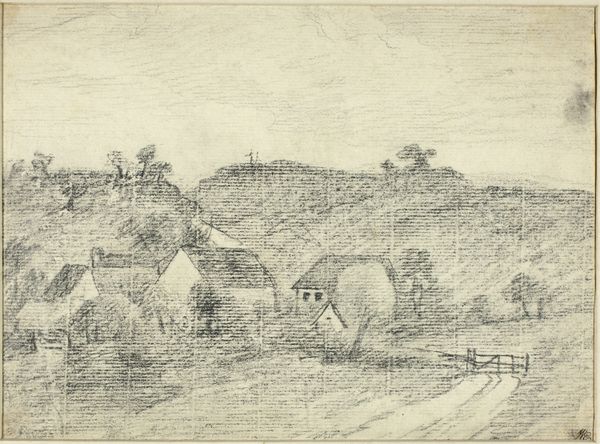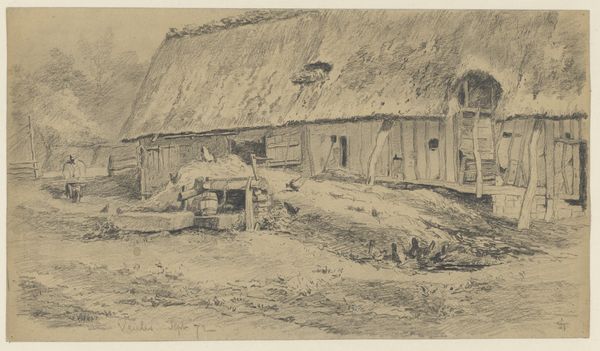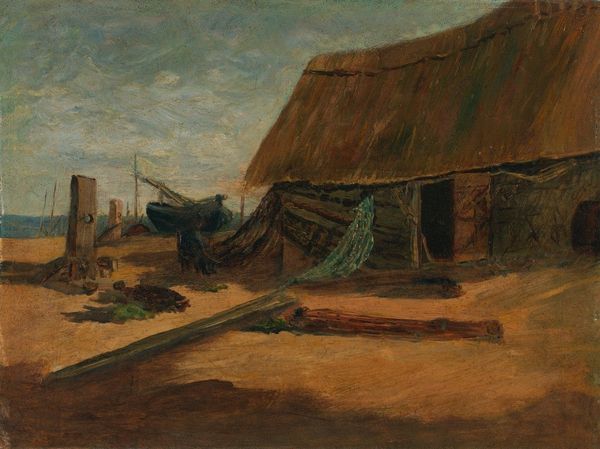
painting, oil-paint
#
painting
#
oil-paint
#
landscape
#
oil painting
#
genre-painting
#
modernism
#
realism
Copyright: Public Domain: Artvee
Curator: Before us hangs Tadeusz Makowski's "Domek," an oil painting from 1927. What’s your initial impression? Editor: Bleak. The color palette is almost monochromatic, that reddish-brown hue permeates the entire composition. There is very little tonal variation and this limits its dynamism. Curator: I'm intrigued by that near-monochromatic palette. Notice how Makowski modulates that dominant color—red and browns create spatial recession. It is quite advanced in its abstraction, the artist simplifies form to the extreme! Look how the fence and stacks become geometric repetitions. Editor: Yes, the repetitive structure and geometric forms certainly invite further considerations around industrialism. This is also an exercise in rural poverty! Curator: Interesting observation. How do you draw that conclusion? Editor: The materials, obviously. Look at the rusting metal roof, the roughly hewn planks. Makowski calls our attention to the makeshift nature of rural life in the interwar period. It feels less like a serene landscape and more a document of material constraints, like in this case! Curator: Yet I think we must also acknowledge that despite those raw materials, Makowski constructs a formal harmony. The pitched roof echoes the shape of the land, while the vertical posts play off the vertical stacks. It speaks to a human desire for order, even amid apparent scarcity. Editor: Possibly! It does however read a touch romanticized. Makowski, from his presumably urban perspective, aestheticizing what, no doubt, represented lived hardship for the inhabitants of this very house. Curator: A valid point, regarding the inherent romanticisation! It leaves us with unresolved questions, don't you agree? The artist and the inhabitants occupy very different structural positions. Editor: Definitely! I do concede the interplay between structural composition and raw materiality provides fertile ground for interpretations. Curator: Indeed. There's a rich ambivalence here which keeps us contemplating the artist's relationship to both form and content.
Comments
No comments
Be the first to comment and join the conversation on the ultimate creative platform.
